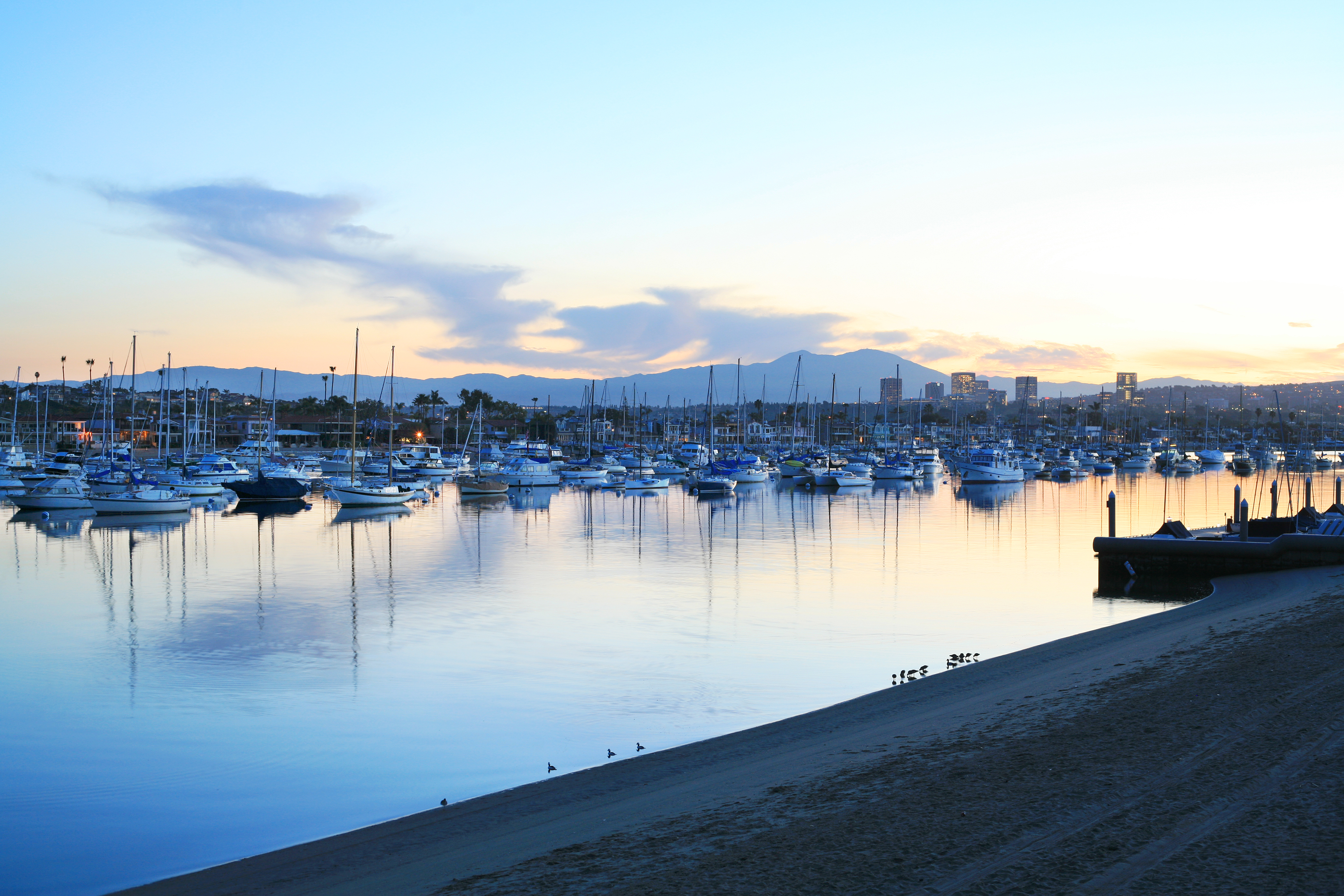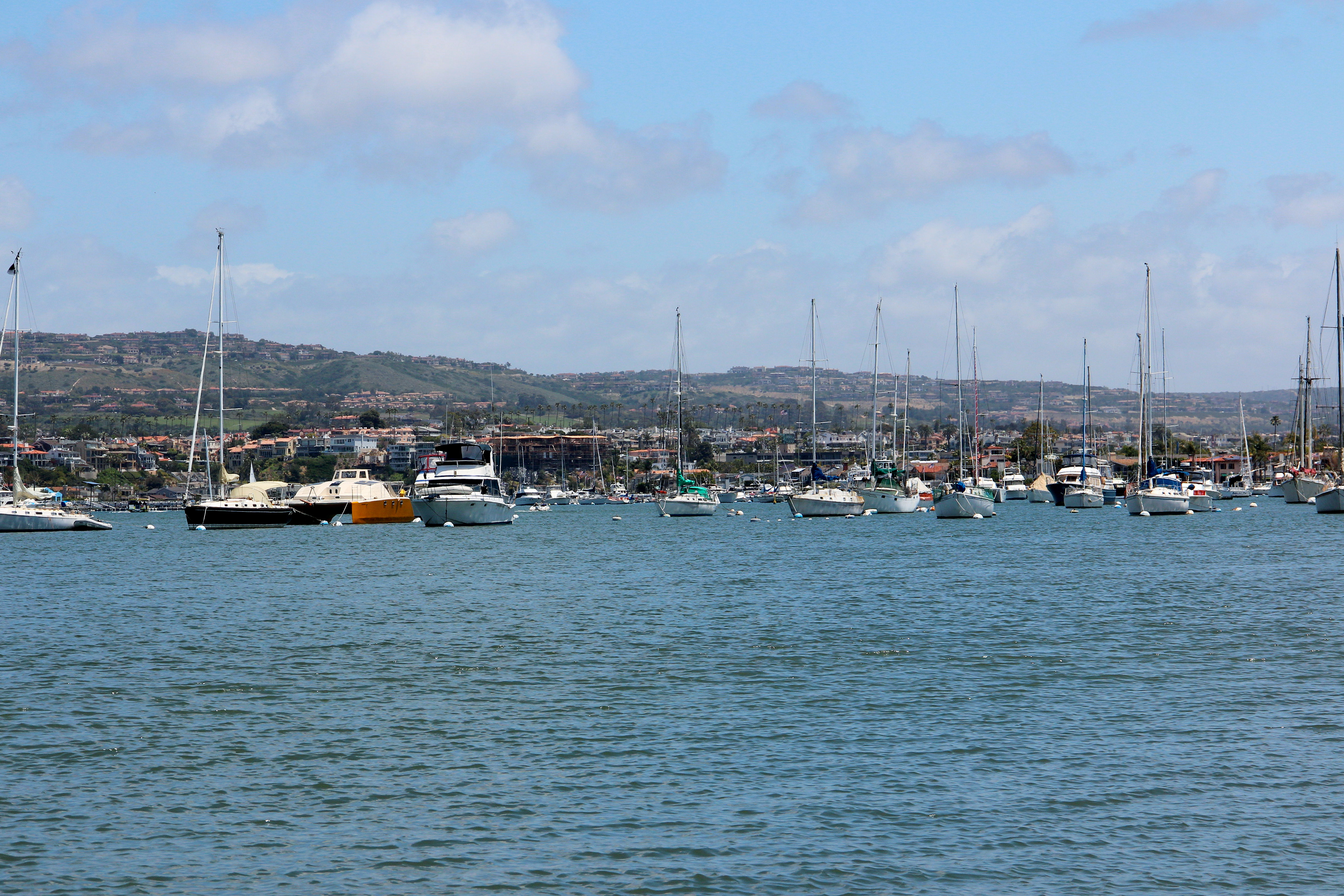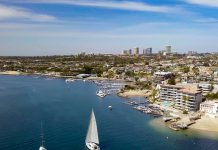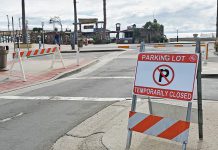
— Photo by Sara Hall ©
Mooring permitees in Newport Harbor will need to make some slight, but important changes soon, following a decision on mooring specifications by Newport Beach City Council on Tuesday.
As part of the recent transition of mooring management from Orange County to the city, staff reviewed the current mooring specifications.
“We thought now was a great time to look at that,” said Harbor Resources Manager Chris Miller at the Sept. 13 Harbor Commission meeting. “We came up with a couple different things.”
Specifications for moorings (buoy style, minimum weights, chain and line sizes, etc.) has been maintained by the city and county for decades. They have been refined over the years by harbor authorities based on experience in all weather, tide and storm surge scenarios, according to the staff report.
“However, as vessels continue to increase in size (beam, length, height and weight), these mooring specifications should be periodically reviewed to ensure continued safety and well-being of the mooring permittee’s vessel, as well as all of the vessels in the mooring fields,” staff conclude in the report.
Every year several boats malfunction or drag their moorings, Miller explained. But during the 2016-17 storm season, more than 40 moorings malfunctioned or dragged out of position, which could potentially cause damage to the attached vessel or other neighboring vessels.
“That raised a red flag,” and prompted them to re-evaluate the specifications, Miller said during the September meeting. “I would hope that people would want to protect their boats and keep their boats from moving, and protect their neighbors as well.”
Many mooring permitees, particularly those in the “storm prone” areas of the harbor, have already increased their mooring weight, he added.
At the Sept. 13 meeting, Harbor Commissioners recommended to Council that the weights for all moorings be increased by 20 percent to account for today’s larger vessels.
The item was on the Sept. 26 City Council agenda, but Councilman Will O’Neill suggested it be continued in order to gather additional public feedback, particularly from the Newport Mooring Association.
The NMA discussed the issue at their annual meeting in October.
Carter Ford of the Newport Mooring Association said more than 100 people attended the NMA meeting.
It was a broad scope of people in attendance, including the Harbormaster, city staff, mooring permitees and more. The discussion was a great exchange of information, Ford said.
After presenting this item to the NMA and entertaining comments, suggestions and feedback from the members and permittee holders, staff is now recommending the City Council adopt the new changes to the mooring specifications.
At the top of the list of the approved changes is switching the mooring buoy type.

— Photo by Sara Hall ©
The old “ring-style” buoy has a rod in the center of the sphere that could deteriorate over time unseen, which could cause the buoy and mooring to fail with no warning, Miller explained. This style isn’t even made any more, he pointed out.
The newly required “tube-style” buoy is used on most moorings nowadays, Miller said. The “tube-style” buoys have a tube through the center to allow the chain to slip through and be visible. It can be easily inspected at any time, preventing it from breaking down unknowingly. Tube-style buoys cost about $300 installed.
However, existing older “ring-style” buoys may still be allowed with harbormaster permission, as long as a safety chain is installed, in order to prevent the vessel from swinging during buoy failure. All new buoys shall conform to the “tube-style” standard.
Many mooring permitees are pleased that the new changes allow owners to install a safety chain to existing “ring-style” buoys rather than being forced to replace the entire buoy, Ford said.
It still accomplishes the goal and is widely supported, Ford said.
There were also a few changes to the rules regarding mooring weights.
Staff didn’t recommend an increase in the required published weights, unless the mooring fails (i.e. moves) due to insufficient weight. If that happens, the permittee is required to increase the weight that moved by 20 percent. This percentage represents a proportional increase for every mooring size.
There is a lot of support for this item, Ford said.
“If it drags, you gotta add weight,” he commented.
Public speakers on Tuesday were split on the changes regarding chains.
Staff didn’t recommend any changes to the chain sizes. However, they did specify a minimum chain grade. All chain must be a minimum of Grade 30 Proof Coil steel chain. Chain size specifications must be adhered to regardless of chain grade. Material other than steel chain may be used only upon written approval of the harbormaster
Another public speaker on Tuesday noted that the chain schedule could allow for inferior chains to be used. He suggested a stronger grade 43 (or higher) chain as more appropriate.
The final major change in mooring specifications is the option of using a sand-line system.
This single-buoy, no-swing concept is currently being tested on the city owned guest moorings. Staff installed 10 sand-line moorings near Marina Park in order to accommodate larger visiting vessels.
Mooring permittees now may voluntarily request sand-line moorings, upon review and written approval by the city.
According to an NMA survey, about two-thirds of mooring permitees didn’t want the sand line system forced upon them, Ford said.
However, the fact that the city already is trying out sand line moorings and wants to work with owners on the issue is encouraging, he added. It makes more sense to leave it up to the individual, with harbormaster permission, Ford said.
All mooring tackle (weight, chain and buoy) is owned and maintained by the individual mooring permittee. Maintenance is generally completed by a mooring contractor, and the city requires the mooring tackle to be lifted out of the water and inspected every two years.
For more information, visit newportbeachca.gov/government/departments/public-works/harbor-operations/moorings




